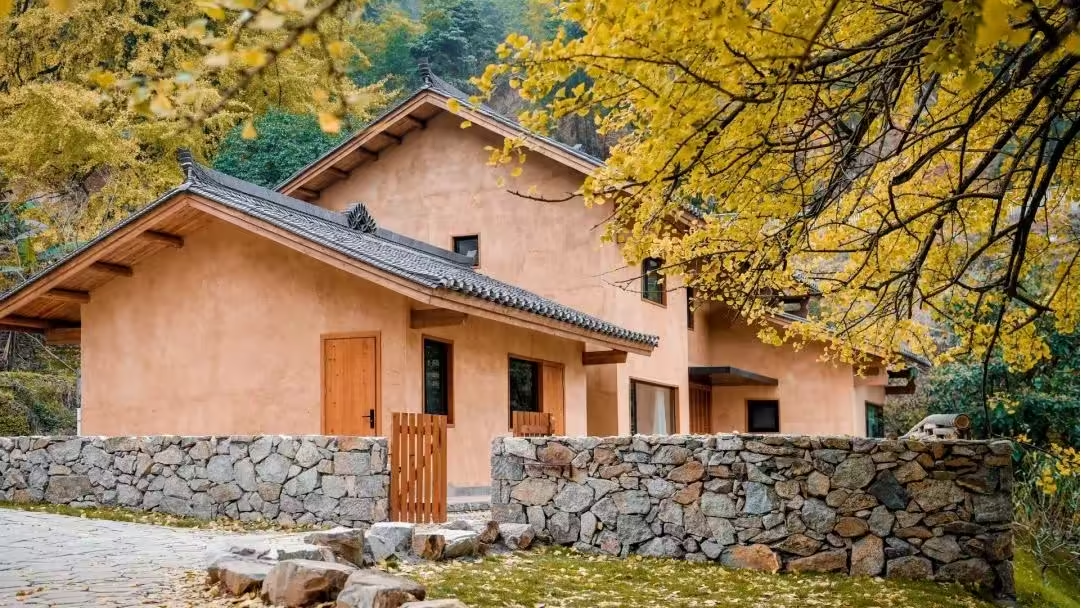Wan’an Ancient Town (万安古镇), located on the banks of the Hengjiang River, serves as the southern gateway to Huangshan and is one of the four major ancient towns in Huizhou. The river meanders in a horseshoe shape from west to east, surrounding the town. Historically, Wan’an was the administrative center of Xiuning County.
During the Ming and Qing dynasties, the town developed significantly along the five-mile street (Wuli Street), which became the foremost marketplace among Xiuning’s nine major streets, known for its rich cultural atmosphere and diverse commercial offerings. At its peak, Wan’an boasted over 400 shops across more than 100 industries, stretching 2,500 meters long and earning the nickname “A Small Xiuning City, A Large Wan’an Street.”
Wan’an Ancient Town has a long history and abundant resources. Notable sites within the town include the ancient city rock of the Yue Kingdom, the Enlightenment Museum of educator Tao Xingzhi, and the old streets of Wan’an, which evoke the charm of the “Along the River During the Qingming Festival” painting. The picturesque Hengjiang River offers scenic views, while the impressive ancient water conservancy project, Wan’an Dam, stands as a testament to the town’s engineering heritage. Additionally, visitors can explore numerous cultural relics, including ancient residences, towers, bridges, and wharves that reflect the town’s rich historical and cultural background.
Travel Information about Wan’an Ancient Town
Ticket Prices and Opening Hours:
Admission to Wan’an Ancient Town is free, while entry to the ancient city rock (古城岩) costs 50 RMB.
Opening hours are from 8:30 AM to 4:00 PM.
Best Time to Visit
Wan’an Ancient Town offers unique scenery throughout the year. The architecture shines with seasonal charm, surrounded by spring grass, summer flowers, autumn leaves, and winter snow.
Transportation
Location: Approximately 4 kilometers east of Xiuning County in Huangshan City.
Bus Service: After arriving in Huangshan City, take a bus from the Huangshan Passenger Transport Station to Wan’an. There are many buses running from Tunxi to Wan’an, with departures every half hour.
Attraction Ratings
- Cultural: ★★★★
- Unique Features: ★★★
- Leisure: ★★★
- Beauty: ★★★
- Romantic: ★★★
- Excitement: ★
Highlights of Wan’an Ancient Town
Gucheng Rock (古城岩)
Gucheng Rock is situated on the eastern side of Wan’an Town in Xiuning County. Established in the first year of the Yong’an era during the Three Kingdoms period, the current scenic area is a later reconstruction. The village features four ancient archways relocated from various regions, along with traditional Ming and Qing dynasty residences, the Huang Family Ancestral Hall spanning over 800 square meters, a red temple, and various other architectural structures. Its unique scenery has made Gucheng Rock a popular filming location for many media productions.
Surrounding Gucheng Rock is Shifeng Peak, which majestically rises beside the Hengjiang River. At the peak, there is a giant cliff with a stone inscription known as “Lianxin Stone” (练心石). During lectures at the “Huang Gu Study” (还古书院), scholars would often stand on “Lianxin Stone” to cultivate their temperament. The Hengjiang River flows eastward in a graceful arc past Wan’an Ancient Town, allowing visitors to enjoy stunning reflections of Gucheng Rock, ancient towers, and bridges from any dock along the riverbank or from the small paths in the fields at the town’s end, creating a harmonious and picturesque scene.
Wan’an Old Street (万安老街)
Wan’an Old Street is characterized by its fishbone-like layout, with a main street running east to west—Wan’an Street—along which several alleys branch out, resembling the ribs of a fish. As you step into Wan’an Old Street, you’ll be greeted by a scene of evenly laid flagstones, pristine white walls, dark gray roof tiles, elegantly protruding eaves, and intricately designed wooden brackets. The stepped gable walls rise in layers, creating a picturesque and tranquil ambiance that embodies the essence of an ancient town.
Though the old street is narrow, it is bustling with a variety of shops. Traditional brands, old workshops, and unique stores are lined up closely, showcasing nearly all the local products from the region of Huizhou. The offerings encompass a wide range of goods, including groceries, hardware, clothing, and food, all featuring distinctive characteristics and quality craftsmanship.
Hengjiang River (横江)
Hengjiang River, the primary source of Qiantang River, Fuchun River, and Xin’an River, originates from Baiding Mountain in Yixian County, Huangshan City. During the Ming Dynasty, it was known as Jiyang River. The river flows steadily toward Tunxi, where it merges with Shuaishui River from another direction, subsequently renaming itself as Xin’an River.
Historically, Hengjiang River served as a vital water transportation artery connecting Yixian County with various regions, including Qiuyun Mountain and Wan’an, ultimately leading to Hangzhou. In spring, as the river water rises, boats crowd the river, sails unfurl, and the calls of boatmen fill the air, marking the peak season of transportation on Hengjiang River.
Wan’an Dam (万安坝)
Wan’an Dam is an ancient hydraulic engineering marvel constructed from青石 (blue stone). It creates a natural lake upstream, resembling a piece of jade nestled beneath Yujishan Mountain. The water is crystal clear, reflecting its surroundings like a mirror, allowing you to see the swimming fish and aquatic plants beneath the surface, creating a scene described as “floating light gleams like gold, while tranquil shadows settle like walls.”
The banks of the dam are adorned with lush trees, and in the early morning, a delicate mist often rises from the lake, swirling and undulating, adding an ethereal quality to the landscape. Wan’an Dam not only serves a functional purpose but also enhances the natural beauty of the area, making it a picturesque spot for visitors.

